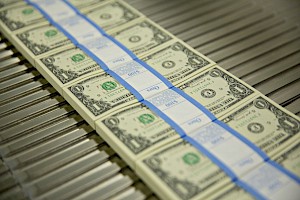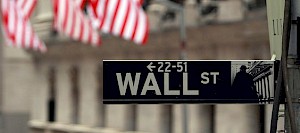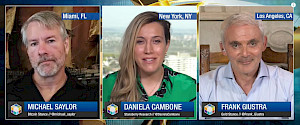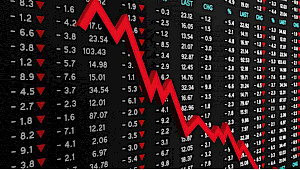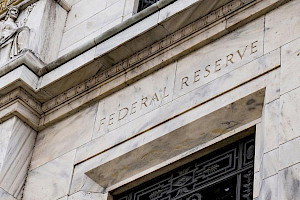Blame for U.S. banking crisis can be pinned on a decades-long reckless monetary policy
April 04, 2023Originally published in The Toronto Star on March 28, 2023 as contributing columnist
“It’s déjà vu all over again!”
— Yogi Berra
To raise or not to raise?
That was the question at the U.S. Federal Reserve’s March 22 policy meeting. And whether it was nobler in their minds to raise interest rates a quarter point and suffer a worsening banking crisis or to pause and admit the fight to contain inflation was effectively lost. Whatever direction they went, they were damned if they did and damned if they didn’t.
To retain some shred of credibility, they chose their words carefully when announcing the decision to hike; both leaving the door open to further hikes but also suggesting that the recent crisis would do the job of fighting inflation for them by tightening credit conditions. While appearing to remain hawkish by hiking, they were also desperately injecting liquidity into the financial system to prevent contagion and perhaps a repeat of the 2008 financial crisis.
The Fed insists that its recently announced emergency Bank Term Funding Program is not quantitative easing (QE) in the strictest sense of the word. But the fact is that it did increase the size of the Fed’s balance sheet by $300 billion to, once again, prevent a collapse of the U.S. financial system. If it walks like a duck, talks and goes with plum sauce like a duck, it’s probably a duck. It was a bailout using the Fed’s balance sheet in every sense of the word.
This sudden expansion of the Fed’s balance sheet last week indicates that the quantitative tightening (QT) experiment is over. The U.S. is heading back to a record $9-trillion balance sheet — and perhaps even higher. As I have been saying since 2009, the Fed would never be able to unwind its balance sheet without imploding the entire system. It didn’t take a degree in advanced calculus to have seen this coming. It’s just arithmetic.
The world is drowning in debt. Over the past decade, global debt has doubled to more than $300 trillion. There was no immediate threat apparent when rates were near zero. But as the Fed jacked up rates aggressively to nearly five per cent, something was bound to break. Banks’ balance sheets are made up of mostly government bonds and other debt securities. As rates rise, the value of those holdings plummet and that’s when liquidity problems arise and rumours start to fly.
At the end of 2022, U.S. banks were sitting on unrealized losses of $620 billion. That number today could be upwards of $1.7 trillion or higher. If policymakers fail to provide assurance to the public, confidence will worsen and bank runs will become more frequent.
The Fed’s own portfolio is also made up of longer-duration government bonds and mortgage-backed securities that were accumulated post 2008 and then again during the pandemic crisis. It was clear the subsequent decision to raise rates last year made the idea of QT dead on arrival. In fact, last year the Fed reported unrealized losses of more than $330 billion against just $42 billion in capital. (Technically, the Fed can’t go bankrupt as it can print money with the click of a mouse).
Just who they hoped would buy their paper is beyond me. Trying to unload its holdings back into the financial system was akin to passing around the hot potato. By being aggressive on rate hikes after being stupidly accommodative for more thana decade, they managed to shoot themselves in the foot and the head at the same time.
Whether true or not, the Department of Treasury’s move to bail out all depositors at Silicon Valley Bank (SVB) adds further credence to the notion that only the wealthy get bailouts. SVB had one of the highest shares of uninsured deposits in the country when it collapsed, with 94 per cent of its deposits landing above the Federal Deposit Insurance Corporation’s (FDIC) $250,000 insurance limit. In any event, it does help foster additional moral hazard into a system spoiled for so long under artificially low rates.
The market is now trying to guess how policymakers will react when the next bank fails. Will SVB prove to be a Bear Stearns or a Lehman Brothers? At the outset of the 2008 financial crisis, the U.S. government chose to bail out troubled investment bank Bear Stearns, but then allowed Lehman to fail just six months later. Predictably, the Lehman failure put the financial crisis in overdrive and in the end, the government had to bail out all the banks. After the SVB collapse, the Fed and the treasury are sending conflicting signals as to who they may decide to rescue the next time there is a run on a bank.
One can forgive them for obfuscating their messaging to the public. On one hand, they can’t well say that SVB was the first or the last to get rescued. That might trigger additional bank runs at the nation’s many small regional and community banks, which hold 80 per cent ($2.3 trillion) of commercial real estate loans in the U.S. Spooking the market could end up being disastrous. On the other hand, promising uninsured depositors bailouts only serves to increase moral hazard throughout the financial system. The Fed’s decision to guarantee noninsured depositors of Silicon Valley Bank is “the most wonderful example of moral hazard we’ve come across for quite awhile,” said Standard Chartered Bank CEO Bill Winters.
The root cause of these reoccurring financial crises happened during Alan Greenspan’s tenure as Fed chair 20-some years ago, when easy money policy was introduced and we saw the beginnings of the inescapable trap the Fed was creating. Not only are these crises reoccurring, but they are becoming more frequent and closer together. Witness the 2019 repo crisis, the 2020 pandemic, last year’s U.K. gilt market crisis and now the current banking crisis in the U.S. and Credit Suisse in Switzerland. In each case, the government and central banks have had to step in and save the day.
Due to its opaqueness, it is impossible to know what’s lurking in the shadows of the multi-trillion dollar derivatives market. Specific black swan events, by definition, are close to impossible to predict. We don’t see them coming until the proverbial black feathers start flying. But you can safely bet that fires are being doused in many corners of the financial system as we speak. I am certain there will be more to come. Managing Director Atsi Sheth of Moody’s Investors Service, one of the Big Three credit ratings firms, commented that the risk is that officials “will be unable to curtail the current turmoil without longer lasting and potentially severe repercussions within and beyond the banking sector.”
When that happens, policymakers will have no choice but to step in with the same tools they have utilized in the past. Lower rates back to near zero and renewed QE. From there I draw several conclusions: inflation in some form is here to stay, fiat currencies will continue to get debased and that we are nearing the end of the current global monetary system.
At some point, someone has to pay the piper for all the reckless monetary policy we have witnessed over the last two decades, which is almost guaranteed to be the average taxpayer through inflation. The maddening part is that the Fed is primarily to blame for the mess we are in. Given the simplicity in the arithmetic required and what one must assume is the level of intelligence of most policymakers, I suspect something more than incompetence may be at play. Nevertheless, here we are. Protect yourselves.




